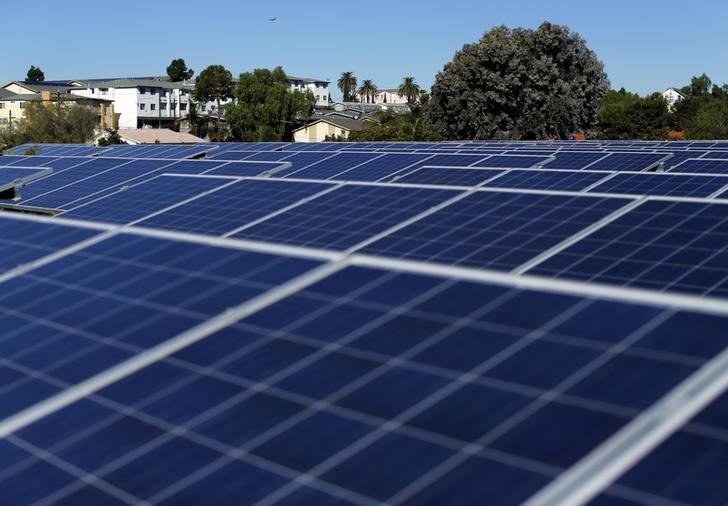(Reuters) - U.S. solar installations rose 43 percent in the second quarter, according to a new report, as sharp gains in large projects for utilities offset slowing growth in residential systems in top solar market California.
The United States installed 2,051 megawatts of photovoltaic solar in the second quarter, according to a report by research firm GTM Research and the Solar Energy Industries Association trade group. Systems for utilities made up 53 percent of the market in the first half of this year thanks to sharply lower system prices that are competitive with fossil fuels and state mandates to source more electricity from renewable sources.
A federal tax credit worth 30 percent of the cost of a solar system has also underpinned the utility market's growth. The credit had been expected to expire at the end of this year, leading to a building boom in 2016. The credit, however, was extended by Congress for five years at the end of last year.
That means 5.7 gigawatts of projects that had been expected to come on line this year will spill over into 2017, the report said. Nearly 8 GW are expected to come online later this year.
Meanwhile, residential solar had its largest quarter ever, installing 650 MW. But growth slowed to 29 percent over the same period last year, a significant drop from the more than 50 percent growth rates the sector has enjoyed annually since 2012.
In California, growth slowed to 19 percent. Throughout 2015, that market had grown more than 50 percent every quarter.
"Fewer early mover customers remain, and this challenge is limiting growth, especially in California," the report said. California "will provide the rest of the U.S. with an important precedent for how rooftop solar can continue to scale in a more mature market."
Strength in newer state markets like Utah and Texas helped boost the residential market.
Overall solar system pricing fell by up to 7.5 percent during the quarter, but increased competition for customers in the residential market drove up the cost of winning new customers during the quarter. Those costs could continue to rise next quarter, the report said.

The cost of a utility-scale system ranged from $1.17 per watt to $1.30 per watt during the quarter, compared with $3.14 per watt for a residential system. About 65 percent of the cost of a residential system comes from labor, customer acquisition and other non-hardware costs.